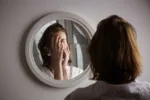
Education Center
Bipolar disorder is a mental illness that used to be known as manic-depressive disorder due to its characteristic changes in mood from the high end of the mood spectrum (mania) to the low end (depression). Though its exact cause is unknown, research indicates factors such as genetics, neurochemistry, and brain structure differences may be involved.
If you or a loved one has recently been diagnosed with bipolar disorder, or if you suspect you are dealing with some of its symptoms, you might feel confused, worried, or even scared about what you’re experiencing and what you should expect. The purpose of this article is to help you understand more about bipolar disorder, including the signs and symptoms, causes, risks factors, and treatment options that are available today.
Bipolar disorder is less common than other psychiatric conditions such as depression or anxiety, however, it still takes a toll on the lives of many Americans. According to the National Institute of Mental Health, as many as 2.8% of the United States population has been diagnosed with a form of the disorder during the past year, and 4.4% will experience the condition at some point in their lives.
Read on to learn more about the disorder and what you can do to cope with its symptoms.
Bipolar Disorder Symptoms
The hallmark sign of bipolar disorder is rapid, often severe transitions in mood between two phases: manic and depressive.
The manic phase usually includes restlessness, high energy, and racing thoughts — and it can easily spiral into agitation, aggression, and even violent behavior. Mania can range from staying up all night and working on a project or cleaning the house to a more dangerous form of the condition in which the affected person:
It’s common after a manic episode for an individual to then fall into a depressive period.
Episodes of clinical depression can look different for each individual, but some general signs of a depressive episode include:
While depression can occur on its own, and is a separately defined mood disorder, someone who suffers from bipolar disorder will experience alternating manic and depressive episodes.

Bipolar Disorder DSM-5 Diagnostic Criteria
People diagnosed with one of the three forms of bipolar disorder deal with different patterns of symptoms, but the core symptoms are the same: Periods of mania, or high energy and mood, which alternate with periods of depression, which can include lethargy, low self-esteem, and hopelessness for the future.
According to the Diagnostic and Statistical Manual of Mental Disorders, Fifth Edition (DSM-5), for a person to be diagnosed with bipolar I, he or she must experience both mania and depression. Bipolar II patients must experience hypomania and depression. Cyclothymic patients must experience hypomania and mild – not clinical – depression to be diagnosed. We’ll further explain each main type of bipolar disorder in more detail below.
Types of Bipolar Disorder
Bipolar I
An individual experiencing true mania, as in bipolar I, will often experience psychotic symptoms, such as hallucinations or delusions. These delusions can look like someone thinking they are speaking directly to God, that they are a superhero, or that they are otherwise “special” or aware of things not privy to the common population.
Delusions can also include thoughts of persecution — such as thoughts of the government following the affected individual, putting tracking devices in a phone, or ideas that family members or friends are talking about you and conspiring against you. On the other end of the spectrum, bipolar I patients will experience periods of clinical depression, during which they might lose weight, not want to participate in their usual activities, and lose interest in their life in general.
Bipolar II
Bipolar II patients do not experience true mania, but this does not mean that bipolar II is less severe. People with bipolar II will experience hypomania, or an elevation in mood, sex drive, and productivity.
Many people enjoy hypomania, and this enjoyment can be a risk factor in not seeking treatment. However, even in hypomania, while you might not have psychotic symptoms, you might lose the ability to make rational decisions and you might engage in risky behavior. Bipolar II patients also experience clinical depression, and, in contrast to bipolar I patients, their depressive episodes often last much longer than their manic phases.
Cyclothymic Disorder
Cyclothymic disorder is diagnosed when an individual experiences both hypomania and a milder form of depression called dysthymia. There are mood shifts that interfere with the person’s life over a period of at least two years, but they are not as severe as bipolar I or II.
Causes and Risk Factors
What causes bipolar disorder? Though doctors and scientists do not know the exact cause of bipolar disorder, it is thought to be the product of several factors, such as brain structure differences, hormonal shifts (especially in women), and genetics. Those with a first degree relative with the disorder — meaning a sibling or parent — have a much greater chance of developing the illness themselves. Risk factors for a first or subsequent episode include stress, substance abuse, and even poor sleep.

Treatments and Therapies for Bipolar Disorder
Bipolar disorder treatment can be difficult to pin down as each patient’s symptoms can be markedly different. To make matters more complicated, arriving at the correct diagnosis of bipolar disorder can take time — up to months or years. However, with the right combination of medication and therapy, patients with bipolar disorder can go on to live healthy, productive lives.
Medication
First-line medications for bipolar disorder are often mood stabilizers such as lithium and the anti-seizure drug lamotrigine. These help your mood to remain stable — meaning the highs don’t go as high and the lows don’t go as low. Other medications to consider, especially if there are psychotic symptoms, are anti-psychotics. Other medications that can be used are anti-anxiety drugs, sleep aids, and antidepressants — though antidepressants like SSRIs can often trigger a manic episode.
Psychotherapy
Though bipolar disorder is not a behavioral condition, therapy can help someone living with the illness develop ways to cope with how their mood and energy changes interfere with their daily life. For example, cognitive behavioral therapy (CBT), is a commonly used psychotherapy treatment that can help patients learn healthy coping strategies and skills. Mindfulness therapy is another helpful approach to helping patients with bipolar disorder.
If you also struggle with addiction or alcoholism, which is very common in bipolar patients, CBT or dialectical behavioral therapy (DBT) is essential to help you reframe your thinking. Additionally, if you are in a relationship, bipolar-specific counseling might help you and your partner understand each other’s perspectives.
Seeking Treatment for Bipolar Disorder
If you or a loved one is suffering from bipolar disorder, it’s vital to get treatment as early as possible. Treatment can help keep your symptoms under control before they disrupt your quality of life. Our team of mental health professionals is here to help you find the treatment that helps you reclaim your quality of life. Contact us today to learn more about our bipolar disorder treatment programs.


